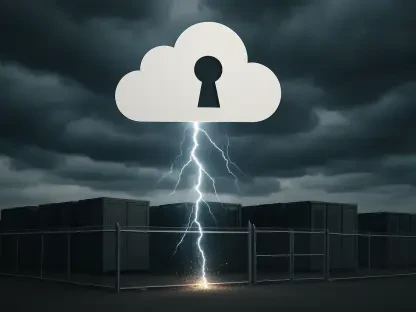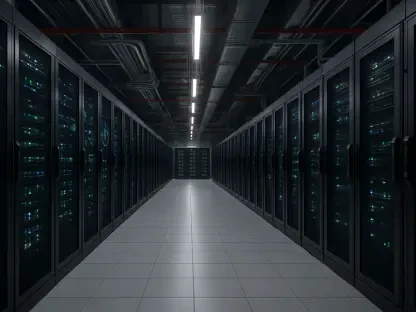The European Union has taken a bold step forward with the introduction of the Cyber Resilience Act (CRA), a groundbreaking regulation designed to strengthen cybersecurity across a wide range of networked devices, machines, and systems. This directive mandates a proactive approach, requiring manufacturers, importers, and distributors to embed security into their products from the design stage through their entire lifecycle. Yet, a recent report by ONEKEY, a leading cybersecurity solutions provider, paints a concerning picture for German industrial companies. With only a year remaining until the compliance deadline, a significant number of these firms are alarmingly unprepared to meet the stringent demands of this regulation. The implications of this gap are profound, threatening not only market access but also exposing vulnerabilities in an increasingly hostile cyber landscape. This pressing issue demands immediate attention as the clock ticks down.
Stark Gaps in Awareness and Readiness
The scale of unpreparedness among German industrial firms is striking, as highlighted by the ONEKEY “IoT & OT Cybersecurity Report.” Based on a survey of 300 companies, the findings reveal that a mere 32% are fully acquainted with the CRA’s requirements, leaving a staggering 68% either partially informed or completely in the dark. Even more troubling, 27% of these businesses have not engaged with the topic at all. This widespread lack of awareness is a critical concern, especially given the transformative nature of the regulation and its imminent enforcement. The report underscores a dangerous disconnect between the urgency of the situation and the readiness of the industrial sector, which could jeopardize compliance efforts. As the deadline looms, this ignorance poses a significant risk, potentially sidelining companies from the EU market if they fail to act swiftly.
Beyond the initial shock of these statistics, the implications of such low engagement are far-reaching. For many German firms, the CRA represents an unfamiliar and complex challenge that requires substantial shifts in operational mindset and resource allocation. The regulation isn’t merely a set of guidelines but a legal mandate with severe consequences for non-compliance. Companies that remain uninformed are not just lagging behind; they are exposing themselves to financial penalties and reputational damage. The survey results suggest that a proactive push for education and awareness campaigns is desperately needed to bridge this knowledge gap. Without a clear understanding of what lies ahead, these businesses are navigating a regulatory minefield blindfolded, a situation that could have been avoided with earlier intervention and strategic planning.
Navigating the Complex Demands of the Regulation
The Cyber Resilience Act sets a high bar for cybersecurity, introducing requirements that are both comprehensive and rigorous. Companies must adopt a “secure by design” and “secure by default” philosophy, ensuring that products are built with robust protections from the outset. Additionally, they are obligated to provide consistent security updates, report vulnerabilities and serious incidents within a tight 24-hour window to entities like the European Cybersecurity Authority (ENISA), and maintain detailed documentation such as Software Bills of Materials (SBOMs). These measures aim to safeguard data integrity, prevent unauthorized access, and ensure operational continuity across diverse sectors. However, for many German firms, these obligations feel like a steep mountain to climb, given the complexity and resource demands involved.
Delving deeper into these requirements reveals why they are so daunting. The 24-hour reporting deadline, for instance, demands rapid response capabilities that many companies currently lack, while creating SBOMs requires a level of transparency and technical expertise not yet widespread in the industry. The shift to embedding security at the design stage also marks a departure from traditional manufacturing priorities, where functionality often took precedence over cybersecurity. This regulatory framework, while necessary for enhancing digital safety, places immense pressure on firms to overhaul their processes in a short timeframe. The challenge is not just technical but cultural, requiring a fundamental rethinking of how products are developed and maintained to align with the stringent standards set by the EU.
Operational Hurdles in Meeting Standards
When it comes to putting the CRA’s mandates into practice, German companies face significant operational challenges, as detailed in the ONEKEY survey. A notable 37% of respondents identified the 24-hour incident reporting window as their primary obstacle, citing the difficulty of detecting and documenting issues within such a constrained period. Another 35% pointed to the complexities of adopting “secure by design” principles, a concept that demands security be woven into every stage of product development. These hurdles reflect a broader struggle to adapt to a regulatory landscape that prioritizes cybersecurity in ways many firms have not historically considered. The transition is proving to be a steep learning curve for an industry accustomed to different priorities.
Further complicating the situation, nearly 30% of surveyed companies reported difficulties in creating SBOMs and managing ongoing software vulnerabilities. These tasks require not only technical know-how but also a sustained commitment to monitoring and updating systems long after products leave the factory floor. For manufacturers who have long focused on delivering functional products over secure ones, this represents a seismic shift in operational focus. The data suggests that without significant investment in training, tools, and processes, many firms risk falling short of compliance. This operational gap is a stark reminder of the disconnect between regulatory expectations and current industry capabilities, highlighting the urgent need for targeted support and resources to help businesses navigate these uncharted waters.
Escalating Cyber Risks and Overlooked Vulnerabilities
The urgency of complying with the CRA is amplified by the escalating cyber threat landscape in Germany, where damages from cybercrime reached a staggering €178.6 billion in the previous year, marking a sharp increase of €30.4 billion from the year before. This alarming rise underscores the real-world consequences of inadequate cybersecurity, as attacks grow in sophistication and frequency. Despite this, many industrial firms continue to prioritize IT network security while neglecting Operational Technology (OT), which encompasses critical systems like industrial controls in factories and logistics centers. This oversight leaves essential infrastructure vulnerable at a time when cyber threats are increasingly targeting industrial processes.
The neglect of OT security is particularly concerning given its role in underpinning core industrial operations. Unlike IT systems, which often receive regular updates and attention, OT environments are frequently outdated and ill-equipped to fend off modern cyber threats. The ONEKEY report signals a pressing need for parity in how companies approach security across both domains. As cyber attackers exploit these weaknesses, the potential for disruption—whether through halted production lines or compromised supply chains—becomes a tangible risk. Addressing this blind spot requires not just compliance with the CRA but a broader commitment to modernizing and protecting industrial systems, a challenge that many German firms have yet to fully embrace.
Harsh Penalties for Falling Short
Non-compliance with the CRA carries consequences that could devastate German industrial companies. Products failing to meet the regulation’s standards will be barred from the EU market, effectively cutting off a significant revenue stream for non-compliant firms. Moreover, violations can trigger fines of up to €15 million or 2.5% of a company’s annual global turnover, whichever amount is greater. In some cases, executives may even face personal liability for lapses in adherence. Given that typical product development cycles span two to three years, the window for implementing necessary changes is rapidly closing, leaving little room for delay or error in the race to meet these stringent requirements.
The financial and legal ramifications are compounded by the potential for reputational damage, which can erode customer trust and investor confidence. A single failure to comply could have cascading effects, impacting not just market access but also long-term business viability. The severity of these penalties serves as a wake-up call, emphasizing that cybersecurity is no longer an optional consideration but a fundamental business imperative. For many companies, the challenge lies in balancing the immediate costs of compliance with the far greater risks of inaction. As the deadline approaches, the pressure to align with the CRA’s demands intensifies, pushing firms to prioritize resources and strategies that ensure they remain competitive in the EU’s tightly regulated landscape.
Evolving Perspectives in a Race Against Time
A gradual shift in corporate thinking is underway, with cybersecurity beginning to be viewed as an integral part of product development rather than a peripheral concern. Jan Wendenburg, CEO of ONEKEY, has noted that while this change in perspective is taking root among some German firms, it remains a slow process. The CRA’s expansive scope, which applies to a vast array of products—from smart home devices to industrial robots—amplifies the complexity of this transition. Companies across diverse sectors must adapt to a uniform set of rigorous standards, often without prior experience in prioritizing security at such a scale, making the journey to compliance a daunting endeavor.
The urgency of this shift cannot be overstated, as the timeline for compliance leaves little margin for hesitation. The evolving mindset, while promising, must accelerate to match the pace of regulatory enforcement and the growing cyber threat landscape. Businesses that lag in adopting this security-first approach risk not only penalties but also falling behind competitors who have already begun to integrate these principles. The path forward requires a concerted effort to align internal processes with external demands, ensuring that cybersecurity becomes a cornerstone of innovation rather than a reactive measure. As the industry stands at this critical juncture, the race to adapt is both a challenge and an opportunity to redefine operational excellence.









